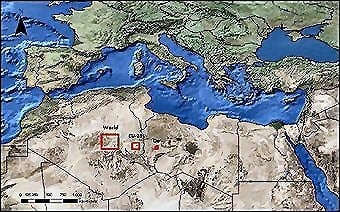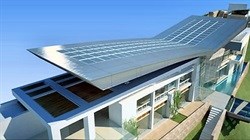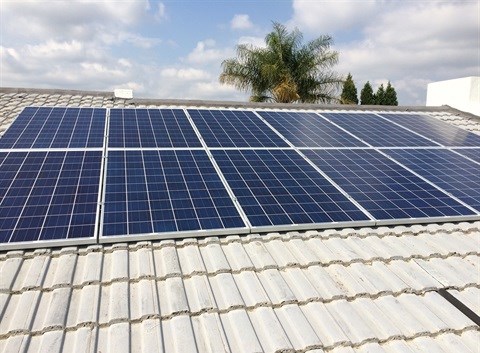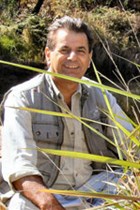Walking down those endless shopping mall tunnels to the restrooms, I was suddenly plunged into total darkness - so black I could not even see my hands before my eyes.
Shrieks of surprise and fear pierced the darkness. "Black-out" I announced to a loud echo. The frightened voices immediately fell silent, probably thinking they had heard the voice of Eskom. Deploying my cell phone, I lit my way down a secondary tunnel to the gents. With one hand holding the screen, I wrestled with a stubborn zip. No go. This was a two-handed job. I clenched the cell phone between my teeth, wondering about damage to my brain.
Returning to the mall centre, I headed towards the light at the far end of the long tunnel. With a sense of relief I realised natural sunshine was streaming through the massive glass dome of the mall, and apart from some shops closing their doors, shoppers were going about their business normally.
It made me realise what a thin, fragile veneer civilised life was, and how energy dependent we've unwittingly become. Literally flip a switch and we are instantly transported back to primeval times, no more evolved than primitive man holding his fire-torch, and moving through underground caves. Without my cell phone I would have been lost in those pitch dark mall tunnels and would have had to literally feel my way out.
Connecting to Earth
The raw truth is that we've become disconnected, at our peril, from the very planet that sustains us. Notwithstanding our enjoyment of modern conveniences, leaders of the military/industrial/medical complex continue to profit through our dependency on their technology and products; this has disrupted the balance of nature.
For the first time those best able to influence change have a choice whether or not to remain dependent on centralised power-generating systems. Utilities such as Eskom continue to charge inflated prices for outmoded and dangerous technologies such as coal and nuclear, when far cleaner, cheaper alternatives already exist.
The truth is current technology enables us to capture more solar energy than the human race could ever use.
The below map is an eye-opener. It is remarkable to note the small area of the Sahara Desert which would be required to power the world, using only solar electric energy. Bear in mind about 1366 watts of solar radiation hits every square metre of the earth during one cloudless sunny day. The smaller red squares refer to Europe and to Germany.

Large red square could solar power the entire planet
Perhaps it's a dream, but if only countries could work together towards such a project, we would eventually be able to reduce our dependency on costly, but ultimately doomed, nuclear and fossil fuel power. If a critical mass of citizens could grasp this, change would take place more rapidly. The solar trend is clear, with Eskom now arguing for a further crippling 25% price increase.
In Germany nearly 30% of electricity needs are already met by wind and solar technology. The mind boggles with what could be achieved in sunny South Africa.
Solar electric innovation

Photovoltaic panels integrated into roof design
Transforming solar energy into electrical energy is the technological equivalent of photosynthesis in plants. Photovoltaic (PV) panels do the transforming, whether for residential or commercial applications. Besides improved battery technology, a new, completely transparent solar glass panel has now been developed which converts sunlight into electricity. This means that windows could power every home or office building in future. Efficiencies are low, but as this technology develops, it could change the face of building design. Flexible thin-film solar panels already exist and efficiencies are significant. Architects worldwide are already adapting to such innovation and are coming up with aesthetic yet practical designs such as this futuristic roof, designed to maximise the collection of solar energy.
New solutions
The only sensible solution to the energy crisis is for home-owners to become more energy independent. The sooner we change our thinking, reconnect to Earth and reclaim our natural power, the better our future (and bank balances) will be. It is clear that Eskom is not fully in control of the power supply and black-outs increasingly occur without prior warning. As we head into another winter, the writing is on the wall.
The cost of photovoltaic (PV) technology is coming down and levelling out. There has never been a better time for the empowered citizen to bite the bullet, invest in solar technology and immediately reduce dependency on Eskom. Energy security means much more than energy independence. It implies an immediate reduction in costs, enhanced survival ability, and an improved quality of life.
Cost-effective PV
Installing a well-designed PV system is a move in the right direction.

An array of 12 roof-mounted photovoltaic (PV) panels
I received an email from a Johannesburg friend titled 'Saying bye-bye to Eskom!' and proudly included a photo of his twelve roof-mounted photovoltaic panels. His system includes a bi-directional 5-kilowatt DC-AC inverter and eight deep cycle batteries. Together with his gas oven, gas heaters, and solar-heated water, he is now virtually off the grid and ready to face winter. Loadshedding is a non-event and Eskom is only used as a back-up when necessary.
Interestingly he is able to remotely monitor and control his system via his cell phone. The PV system cost him R150,000. If he had invested this amount at 6%, his interest would have been around R9k per annum. All considered, not a bad investment in energy security considering he is saving nearly R1,000 per month on electricity bills.
Having said this, a good first step for most homeowners would be to replace the money-guzzling electric geyser with a solar water heating system.
However, before getting into hot water, it is important to contract a reputable installation company able to maintain your system and honour guarantees. This applies to both solar water heating and to photovoltaic systems. Check Hellopeter.com for complaints and ask those in the know for their recommendations.
Provided we can shift our world view and have the courage to act, we will never look back. The key is to embrace technology that interfaces with our natural environment ... our solar system, and nature.
Far preferable to capitalise on the miracle of modern technology, rather than to receive a wake-up call in a pitch dark mall loo at two in the afternoon.


















































